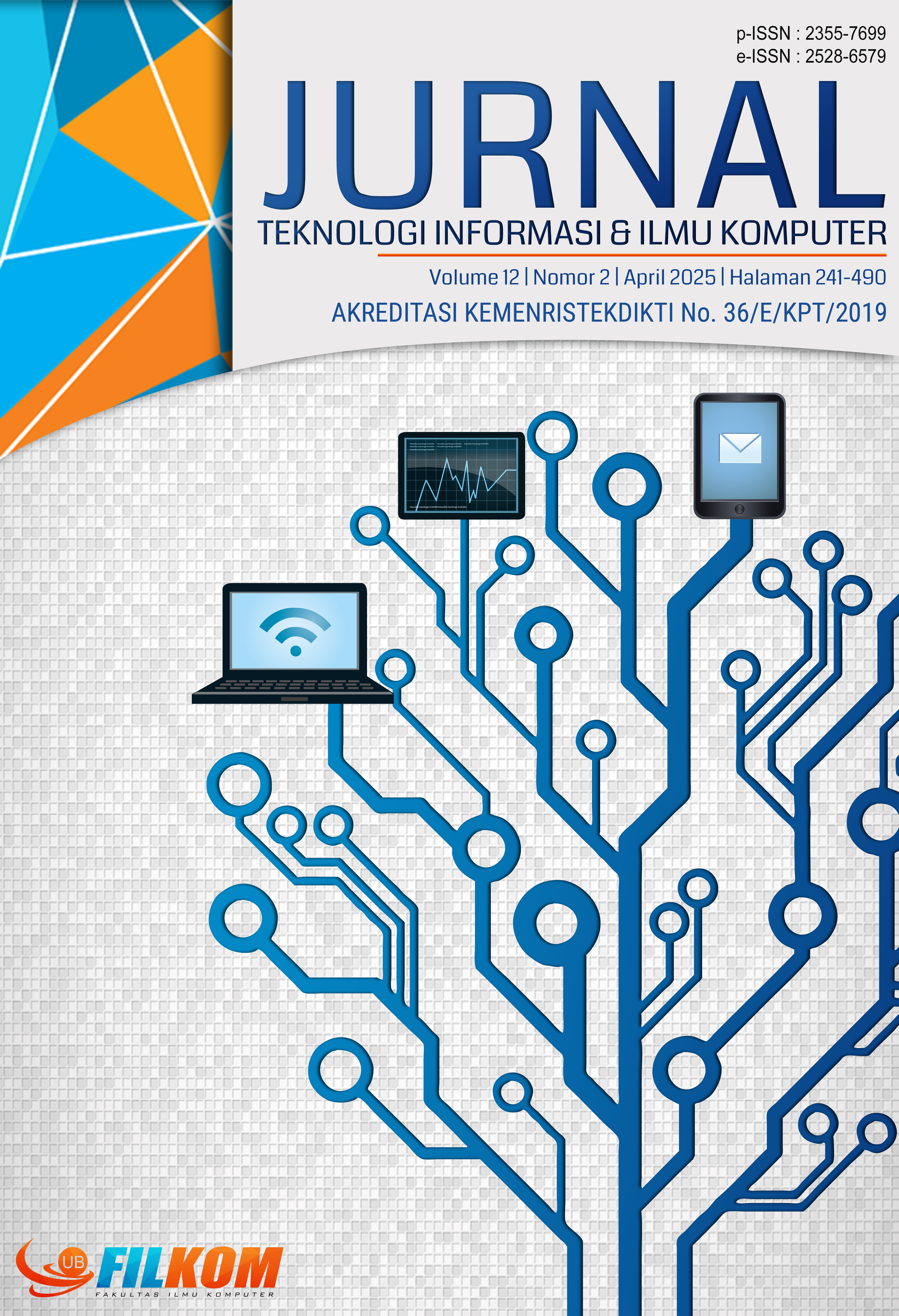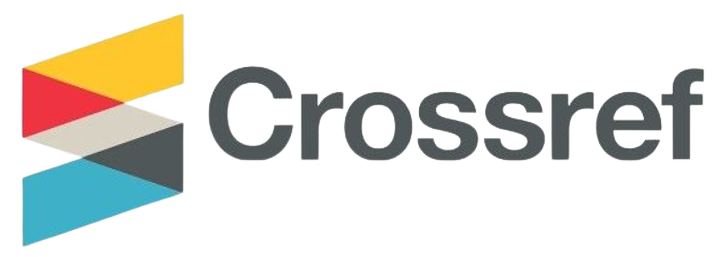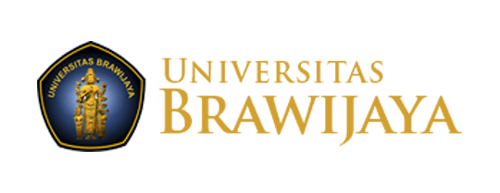Aplikasi Metode Lean User Experience dan System Usability Scale pada Analisis, Perancangan, dan Evaluasi Antarmuka Aplikasi Mobile
DOI:
https://doi.org/10.25126/jtiik.2025125762Kata Kunci:
user experience, lean UX method, system usability scaleAbstrak
Sistem i-Lab merupakan aplikasi berbasis web untuk mendukung pelaksanaan praktikum di Departement Informatika Universitas Muhammadiyah Malang (UMM). Namun, sistem berbasis web yang saat ini digunakan dianggap belum memenuhi kebutuhan sebagian besar pengguna yang lebih sering menggunakan mobile phone. Berdasarkan survey awal, aplikasi mobile i-Lab diharapkan memiliki tampilan yang menarik dan user experience yang memuaskan. Oleh karena itu, tujuan penelitian ini adalah merancang antarmuka pengguna pada aplikasi iLab mobile menggunakan pendekatan Lean User Experience (Lean UX). Lean UX dianggap lebih sesuai dan efisien dalam proses perancangan user interface perangkat lunak dengan penggunaan sumber daya minimum. Dalam penelitian ini metode Lean UX diterapkan dalam dua iterasi dimana setiap iterasi terdiri dari tiga tahap: yaitu think (analisis), design (membuat MVP), dan test (pengujian dan analisis feedback). Evaluasi dilakukan pada tiap iterasi dalam Lean UX untuk mengetahui tingkat usability sesuai dengan perpektif pengguna. Hasil perancangan dievaluasi menggunakan System Usability Scale (SUS) dengan responden yang merupakan pengguna aplikasi. Berdasarkan pengujian, rancangan Skor akhir mendapatkan nilai “B” (rentang 80-85) dengan skor 81,75 yang termasuk dalam kategori tingkat acceptability range “Good” dan adjective rating “Excellent”.
Abstract
The i-Lab system is a web-based application to support the implementation of practicum at the Department of Informatics, University of Muhammadiyah Malang (UMM). However, the web-based system currently used is considered not to meet the needs of most users who use mobile phones more often. Based on the initial survey, the i-Lab mobile application is expected to have an attractive appearance and a satisfying user experience. Therefore, the purpose of this research is to design a user interface on the iLab mobile application using a Lean User Experience (Lean UX) approach. Lean UX is considered to be more suitable and efficient in the process of designing user interface software with minimum resource usage. In this study, the Lean UX method is applied in two iterations where each iteration consists of three stages: think (analysis), design (make MVP), and test (test and analyze feedback). Evaluation is carried out at each iteration in Lean UX to determine the level of usability according to the user's perspective. The results of the design are evaluated using the System Usability Scale (SUS) with respondents who are application users. Based on the test, the final score design got a score of "B" (range 80-85) with a score of 81.75 which was included in the acceptability range category "Good" and the adjective rating "Excelent".
Downloads
Referensi
Abascal, J., S. Barbosa, M. Fetter, T. Gross, P. Palanque, and M. Winckler. 2015. “Human-Computer Interaction - INTERACT 2015: 15th IFIP TC 13 International Conference Bamberg, Germany, September 14-18, 2015 Proceedings, Part IV.” Lecture Notes in Computer Science (Including Subseries Lecture Notes in Artificial Intelligence and Lecture Notes in Bioinformatics) 9299:673–74. doi: 10.1007/978-3-319-22723-8.
Aprilia, Ika H. N., P. Insap Santoso, and Ridi Ferdiana. 2015. “Pengujian Usability Website Menggunakan System Usability Scale Website Usability Testing Using System Usability Scale.” Jurnal IPTEK-KOM 17(1):31–38.
Bangor, Aaron, Technical Staff, Philip Kortum, James Miller, and Technical Staff. 2009. “Determining What Individual SUS Scores Mean: Adding an Adjective Rating Scale.” Journal of Usability Studies 4(3):114–23.
Brooke, John. 1995. “SUS: A ‘Quick and Dirty’ Usability Scale.” Usability Evaluation In Industry (November):207–12. doi: 10.1201/9781498710411-35.
Ghiffary, Muhammad Nauval El, Tony Dwi Susanto, and Anisah Herdiyanti Prabowo. 2018. “Analisis Komponen Desain Layout, Warna, Dan Kontrol Pada Antarmuka Pengguna Aplikasi Mobile Berdasarkan Kemudahan Penggunaan (Studi Kasus: Aplikasi Olride).” Jurnal Teknik ITS 7(1). doi: 10.12962/j23373539.v7i1.28723.
Gothelf, Jeff, and Josh Seiden. 2013. Lean UX - Applying Lean Principles to Improve User Experience.
Hasim, Wahid, Sunu Wibirama, and Hanung Adi Nugroho. 2019. “Redesign of E-Participation Using User-Centered Design Approach for Improving User Experience.” 2019 International Conference on Information and Communications Technology, ICOIACT 2019 857–61. doi: 10.1109/ICOIACT46704.2019.8938545.
Hendradewa, Andrie Pasca. 2017. “Perbandingan Metode Evaluasi.” Perbandingan Metode Evaluasi Usability (Studi Kasus : Penggunaan Perangkat Smartphone) 23(1):9–18.
Marien, Sophie, Delphine Legrand, Ravi Ramdoyal, Jimmy Nsenga, Gustavo Ospina, Valéry Ramon, and Anne Spinewine. 2019. “A User-Centered Design and Usability Testing of a Web-Based Medication Reconciliation Application Integrated in an EHealth Network.” International Journal of Medical Informatics 126(February 2018):138–46. doi: 10.1016/j.ijmedinf.2019.03.013.
Nealbert, Jan, V. Calimag, Anne G. Miguel, Romel S. Conde, and Luisa B. Aquino. 2014. “14. Eng-Ubiquitous Learning Environment Using Android-Luisa B. Aquino.” International Journal of Research in Engineering & Technology 2(2):2321–8843.
Nielsen, J., and J. Landauer. 1993. “A Mathematical Model of Finding the Usability Problem. Proceedings of the CHI 93 Proceedings of the Interact Conference on Human Factors in Computing Systems.” Proceedings of ACM INTERCHI’93 Conference 206–13.
Nielsen, Jakob. 1994. “Usability Inspection Methods.” in Conference on Human Factors in Computing Systems - Proceedings.
Sugiono, P. D. 2014. “Metode Penelitian Pendidikan Pendekatan Kuantitatif.Pdf.” Metode Penelitian Pendidikan Pendekatan Kuantitatif, Kualitatif Dan R&D.
Tarute, Asta, Shahrokh Nikou, and Rimantas Gatautis. 2017. “Mobile Application Driven Consumer Engagement.” Telematics and Informatics 34(4):145–56. doi: 10.1016/j.tele.2017.01.006.
Trisminingsih, Rina, and Dedra Nurliaputri. 2019. “User Experience Design of Task-Management Application for Plantation Supervisor Using Lean UX.” Proceedings - 2019 5th International Conference on Science and Technology, ICST 2019 16–19. doi: 10.1109/ICST47872.2019.9166579.
Zaini, Nur Atiqah, Siti Fadzilah Mat Noor, and Tengku Siti Meriam Tengku Wook. 2019. “Evaluation of APi Interface Design by Applying Cognitive Walkthrough.” International Journal of Advanced Computer Science and Applications 10(2):306–15. doi: 10.14569/ijacsa.2019.0100241.
Unduhan
Diterbitkan
Terbitan
Bagian
Lisensi
Hak Cipta (c) 2025 Jurnal Teknologi Informasi dan Ilmu Komputer

Artikel ini berlisensiCreative Commons Attribution-ShareAlike 4.0 International License.

Artikel ini berlisensi Creative Common Attribution-ShareAlike 4.0 International (CC BY-SA 4.0)
Penulis yang menerbitkan di jurnal ini menyetujui ketentuan berikut:
- Penulis menyimpan hak cipta dan memberikan jurnal hak penerbitan pertama naskah secara simultan dengan lisensi di bawah Creative Common Attribution-ShareAlike 4.0 International (CC BY-SA 4.0) yang mengizinkan orang lain untuk berbagi pekerjaan dengan sebuah pernyataan kepenulisan pekerjaan dan penerbitan awal di jurnal ini.
- Penulis bisa memasukkan ke dalam penyusunan kontraktual tambahan terpisah untuk distribusi non ekslusif versi kaya terbitan jurnal (contoh: mempostingnya ke repositori institusional atau menerbitkannya dalam sebuah buku), dengan pengakuan penerbitan awalnya di jurnal ini.
- Penulis diizinkan dan didorong untuk mem-posting karya mereka online (contoh: di repositori institusional atau di website mereka) sebelum dan selama proses penyerahan, karena dapat mengarahkan ke pertukaran produktif, seperti halnya sitiran yang lebih awal dan lebih hebat dari karya yang diterbitkan. (Lihat Efek Akses Terbuka).














